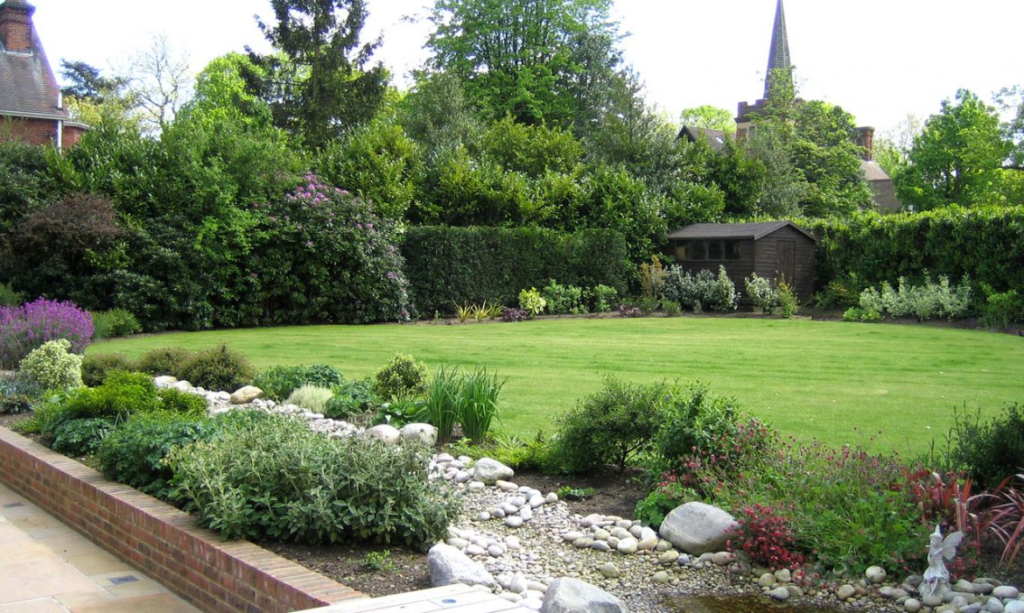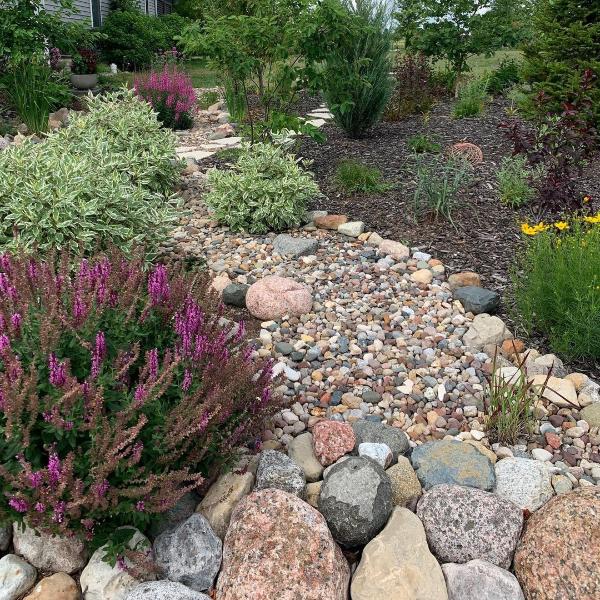Some Ideas on Hilton Head Landscapes You Need To Know
Some Ideas on Hilton Head Landscapes You Need To Know
Blog Article
The Greatest Guide To Hilton Head Landscapes
Table of ContentsHilton Head Landscapes Fundamentals ExplainedNot known Details About Hilton Head Landscapes How Hilton Head Landscapes can Save You Time, Stress, and Money.Hilton Head Landscapes for DummiesHilton Head Landscapes - TruthsThe Single Strategy To Use For Hilton Head LandscapesHilton Head Landscapes Things To Know Before You BuyWhat Does Hilton Head Landscapes Do?
Type compatibility is also a major component of unity in designone or 2 noticeably different forms are excellent for contrast and focus, yet usually all various other types ought to have some similarities for a combined look. Texture refers to just how crude or great the surface of the plant or hardscape material really feels and/or looks.
Instances of plants with rugged texture include philodendrons, agaves, bromeliads, hollies, palms, and hydrangeas. Qualities that create fine texture include little vegetation; slim, strappy leaves (lawns) or tall, slim stems; small, thick twigs and tiny branches; long stems (creeping plants); and tiny, delicate blossoms.
The Ultimate Guide To Hilton Head Landscapes
Most plants are moderate texture, in that they can not be called having either crude or fine structure. They are defined by medium-sized fallen leaves with easy shapes and smooth edges. The average-sized branches are not densely spaced nor commonly spaced, and the total kind is normally rounded or mounding. Medium-textured plants act as a background to web link and unify the crude- and fine-textured plants.

To make a space really feel smaller sized, place the coarse structures along the outer boundary and the fine structures closest to the audience. The detail of the rugged structure makes the plants appear closer and makes the space feel smaller. The perceived texture of plants can also alter with the distance from the plant.
Indicators on Hilton Head Landscapes You Should Know
Strong shades raise the contrast and make the texture show up coarser, while low-key colors can flatten appearance. Hardscape with a rugged texturesuch as extremely rough rocks and bold, big timberstends to make all plant material show up more medium textured. Developers usually create a structure study (Number 8) theoretically to assist decide the setup of plant materials.
Figure 8. Texture research study. Color in plant material and hardscape includes interest and range to the landscape. Color is the most noticeable element in the landscape and is generally the focus of most house owners; however, it is also the most temporary aspect, typically lasting just a couple of weeks a year for specific plants.
The 6-Minute Rule for Hilton Head Landscapes
A basic summary of the shade wheel consists of the three key shades of red, blue, and yellow; the 3 second shades (a mix of 2 primaries) of eco-friendly, orange, and violet; and six tertiary colors (a mix of one nearby key and second shade), such as red-orange. Shade theory discusses the relationship of colors to every other and how they should be used in a composition.

Analogous (sometimes called harmonious) color design are any 3 to 5 shades that are surrounding on the shade wheel, such as red, red-orange, orange, yellow-orange, and yellow, or blue, blue-violet, and violet (landscape design hilton head). The shades belong to every various other since they commonly consist of two main shades mixed to form a secondary and two tertiary colors, which means they share typical properties
Corresponding colors are often located normally in flowers; an usual set is yellow and violet. Shade is found in the flowers, foliage, bark, and fruit of plants.
10 Simple Techniques For Hilton Head Landscapes
Eco-friendly foliage in all its different shades is the leading color by amount, however various other colors record attention quicker due to their high comparison to the shade environment-friendly. Shade is additionally found in structures, rocks, pavers, timber, and furniture. A lot of shades in natural products, such as stone and timber, are usually muted and tend to official website be variations of brownish, tan, and light yellow.
Colors have properties that can affect emotions, spatial understanding, light high quality, balance, and emphasis. Amazing colors tend to be calming and should be made use of in locations for relaxation and calmness.
Some Of Hilton Head Landscapes
Trendy shades tend to recede and are perceived as being farther away, making a room feel bigger. Color can additionally be used to record attention and straight sights.
Intense yellow, which has the highest intensity, additionally has a high comparison with all other colors (typically defined as a "pop" of color) and must be used moderately. A percentage of extreme shade has as much visual weight as a large quantity of an extra suppressed or weak color.
Analogous (occasionally called harmonious) color design are any three to five colors that are nearby on the shade wheel, such as red, red-orange, orange, yellow-orange, and yellow, or blue, blue-violet, and violet. The shades are relevant per other since they typically consist of two primaries blended to create an additional and 2 tertiary shades, which suggests they share typical homes.
The 8-Minute Rule for Hilton Head Landscapes
Corresponding colors are frequently found normally in blossoms; a typical set is yellow and violet. Color is located in the blossoms, vegetation, bark, and fruit of plants.
Environment-friendly vegetation in all its various shades is the leading shade by amount, but various other colors record focus a lot more readily due to their high comparison to the color environment-friendly - landscapers in bluffton sc - https://hiltonheadlandscapes.godaddysites.com/f/transform-your-outdoor-space-with-hilton-head-landscapes. Color is additionally located in buildings, rocks, pavers, timber, and furniture. The majority of colors in all-natural products, such as stone and timber, are usually muted and have a tendency to be variations of brownish, tan, and pale yellow
A Biased View of Hilton Head Landscapes
Color is a crucial element for creating passion and selection in the landscape. Colors have properties that can impact feelings, spatial perception, light high quality, balance, and focus. One residential or commercial property of shade is defined about temperaturecolors appear to be cool or warm and can impact feelings or sensations. Awesome colors have a tendency to be relaxing and ought to be utilized in areas for relaxation and serenity.
The "temperature" of colors can likewise influence the assumption of distance. Great shades often tend to decline and are viewed as being further away, making a space feel larger. Warm shades often tend to breakthrough and are regarded as being more detailed, making a space really feel smaller sized. Shade can additionally be made use of to record interest and direct views.
As an example, brilliant yellow, which has the highest possible strength, likewise has a high contrast with all various other shades (often referred to as a "pop" of shade) and ought to be utilized sparingly. A percentage of intense shade has as much aesthetic weight as a large amount of a more subdued or weak color.
Report this page